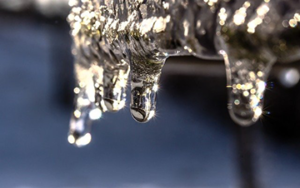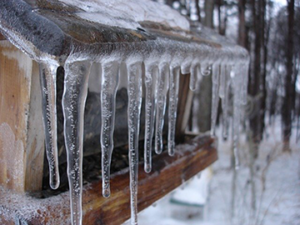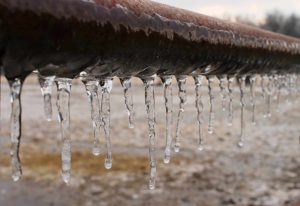
Frozen pipes are a common issue in colder climates, particularly during the winter months. When water inside the pipes freezes, it expands, which can cause the pipes to crack or burst. This can lead to significant water damage and costly repairs. Understanding the nature of this problem is crucial for homeowners and business owners alike, as it allows them to take proactive measures to prevent frozen pipes and address them effectively when they occur.
The Risks and Consequences of Frozen Pipes
The risks associated with frozen pipes extend beyond the inconvenience of disrupted water flow. When pipes freeze and subsequently cause a burst pipe emergency, they can cause extensive water damage to property, including walls, floors, and personal belongings. This can result in expensive repairs and the potential for mold growth, which poses health risks. Additionally, the loss of water supply can disrupt daily activities and business operations, leading to further complications and financial losses.
Traditional Methods for Thawing Frozen Pipes
There are several traditional methods for thawing frozen pipes, each with its own set of advantages and disadvantages. Some common techniques include using a hairdryer, applying heat tape, or wrapping the pipes with warm towels. While these methods can be effective in certain situations, they often require significant time and effort. Additionally, they may not be suitable for all types of pipes or locations, and there is a risk of causing further damage if not done correctly.
Introduction to Hot Water Jetting
Hot water jetting is a modern and highly effective solution for thawing frozen pipes. This technique involves using specialized equipment to direct a high-pressure stream of hot water into the frozen pipe. The heat from the water quickly melts the ice, restoring the flow of water and minimizing the risk of damage to the pipes. Hot water jetting is a professional service typically provided by plumbing experts, ensuring that the process is carried out safely and efficiently.
How Hot Water Jetting Works
Hot water jetting works by utilizing a powerful jetting machine that heats water to a high temperature and then propels it through a hose and nozzle. The nozzle is inserted into the frozen pipe, and the hot water is directed at the ice blockage. The combination of heat and pressure effectively breaks down the ice, allowing it to melt and flow out of the pipe. This method is highly efficient and can quickly restore normal water flow, even in the most challenging situations.
Advantages of Hot Water Jetting for Thawing Frozen Pipes
There are several key advantages to using hot water jetting for thawing frozen pipes:
- Speed and Efficiency: Hot water jetting can quickly thaw frozen pipes, minimizing downtime and disruption.
- Safety: The controlled application of heat reduces the risk of pipe damage compared to other methods.
- Versatility: This technique can be used on various types of pipes and in different locations, making it a versatile solution.
- Professional Service: Hot water jetting is typically performed by trained professionals, ensuring the job is done correctly and safely.
Preventing Frozen Pipes with Hot Water Jetting
In addition to thawing frozen pipes, hot water jetting can also be used as a preventive measure. By regularly cleaning and maintaining pipes with hot water jetting, homeowners and business owners can reduce the risk of blockages and freezing. This proactive approach helps ensure that pipes remain in good condition and can handle the demands of cold weather without issue.

Hot water jetting offers a powerful and effective solution for addressing frozen pipes, ensuring that water flow is quickly restored and potential damage is minimized.
When to Call a Professional for Hot Water Jetting
While some minor pipe issues can be addressed with DIY methods, frozen pipes often require the expertise of a professional. It is important to call a professional for hot water hydro jetting if you encounter any of the following situations:
- Severe Freezing: If the pipes are completely frozen and DIY methods are ineffective.
- Multiple Blockages: If there are multiple frozen sections or blockages in the pipe system.
- Complex Pipe Systems: If the pipes are located in hard-to-reach areas or are part of a complex system.
- Previous Damage: If the pipes have previously experienced damage or are at risk of bursting.
Choosing the Right Hot Water Jetting Service Provider
When selecting a service provider for hot water hydro jetting, it is important to consider several factors:
- Experience and Expertise: Choose a provider with extensive experience and specialized knowledge in hot water jetting.
- Equipment Quality: Ensure that the provider uses high-quality, professional-grade equipment for the best results.
- Customer Reviews: Read customer reviews and testimonials to gauge the provider’s reputation and reliability.
- Service Guarantee: Look for a provider that offers a satisfaction guarantee or warranty on their services.
The Cost of Hot Water Jetting Services
The cost of hot water jetting services can vary depending on several factors, including the severity of the freezing, the complexity of the pipe system, and the service provider’s rates. While hot water jetting may be more expensive than some DIY methods, the benefits of speed, efficiency, and reduced risk of damage often make it a worthwhile investment. Additionally, many service providers offer competitive pricing and flexible payment options to accommodate different budgets.
Case Studies: Successful Hot Water Jetting Solutions
To illustrate the effectiveness of hot water jetting, here are a few case studies of successful solutions:
- Residential Home: A homeowner in a cold climate experienced a severe pipe freeze that disrupted their water supply. A professional hot water jetting service was able to quickly thaw the pipes, restoring water flow and preventing further damage.
- Commercial Building: A business owner faced multiple frozen pipes in their commercial building, causing significant disruption to operations. Hot water jetting was used to efficiently thaw the pipes, allowing the business to resume normal activities.
- Industrial Facility: An industrial facility with a complex pipe system encountered freezing issues during a particularly harsh winter. Hot water jetting provided a fast and effective solution, ensuring the facility could continue operating without interruption.
Conclusion: The Superiority of Hot Water Jetting for Frozen Pipes
Hot water jetting stands out as the best solution for thawing frozen pipes due to its speed, efficiency, and safety. By utilizing professional-grade equipment and expertise, hot water jetting can quickly resolve even the most challenging frozen pipe issues, minimizing damage and disruption. Whether used as a reactive measure to address freezing or as a proactive maintenance strategy, hot water jetting offers a reliable and effective solution for homeowners and business owners alike.
Additional Tips for Preventing Frozen Pipes
In addition to hot water jetting, there are several other measures that can help prevent frozen pipes:
- Insulate Pipes: Use pipe insulation to protect exposed pipes from cold temperatures.
- Maintain Heat: Keep the thermostat set to a consistent temperature, even when away from home.
- Seal Leaks: Seal any leaks or gaps in walls, floors, and ceilings to prevent cold air from reaching the pipes.
- Allow Drips: During extreme cold, allow faucets to drip slightly to keep water moving through the pipes.
Final Thoughts on Hot Water Jetting and Pipe Maintenance
Maintaining the integrity of your plumbing system is essential for the smooth operation of your home or business. Hot water jetting offers a powerful and effective solution for addressing frozen pipes, ensuring that water flow is quickly restored and potential damage is minimized. By combining hot water jetting with other preventive measures, you can protect your pipes from freezing and enjoy peace of mind during the coldest months of the year.



